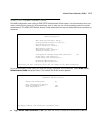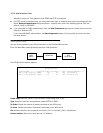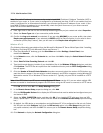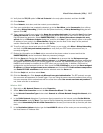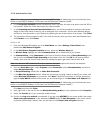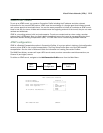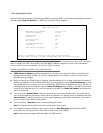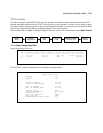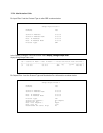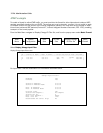
Virtual Private Networks (VPNs) 12-21
■ You must specify a Key String of up to (and including) 20 characters when DES is selected. When
encryption is None, this field is invisible.
■ You can specify that this router will Initiate Connections, acting as a foreign agent (Yes), or only answer
them, acting as a home agent (No).
■ Tunnels are normally initiated On Demand; however, you can disable this feature. When disabled, the
tunnel must be manually established through the call management screens.
■ You can specify the Idle Timeout, an inactivity timer, whose expiration will terminate the tunnel. A value of
zero disables the timer. Because tunnels are subject to abrupt termination when the underlying datalink is
torn down, use of the Idle Timeout is strongly encouraged.
■ Return to the Connection Profile screen by pressing Escape.
■ Select IP Profile Parameters and press Return. The IP Profile Parameters screen appears.
■ Enter the Remote IP Address and Remote IP Mask for the host to which you want to tunnel.
Allowing VPNs through a Firewall
An administrator interested in securing a network will usually combine the use of VPNs with the use of a firewall
or some similar mechanism. This is because a VPN is not a complete security solution, but rather a component
of overall security. Using a VPN will add security to transactions carried over a public network, but a VPN alone
will not prevent a public network from infiltrating a private network. Therefore, you should combine use of a
firewall with VPNs, where the firewall will secure the private network from infiltration from a public network, and
the VPN will secure the transactions that must cross the public network.
IP Profile Parameters
Address Translation Enabled: Yes
NAT Map List... Easy-PAT
NAT Server List... Easy-Servers
Local WAN IP Address: 0.0.0.0
Remote IP Address: 173.167.8.10
Remote IP Mask: 255.255.0.0
Filter Set...
Remove Filter Set
Receive RIP: Both
Enter a subnet mask in decimal and dot form (xxx.xxx.xxx.xxx).



